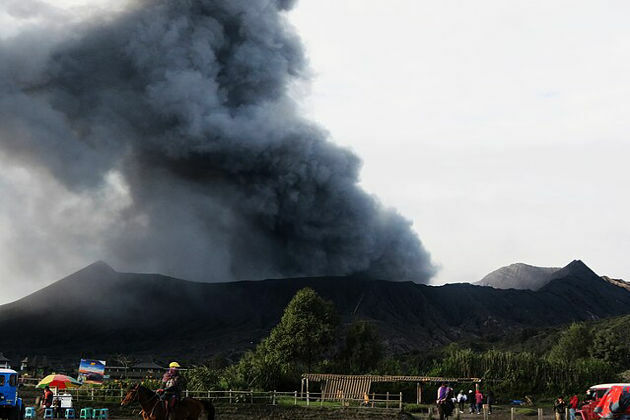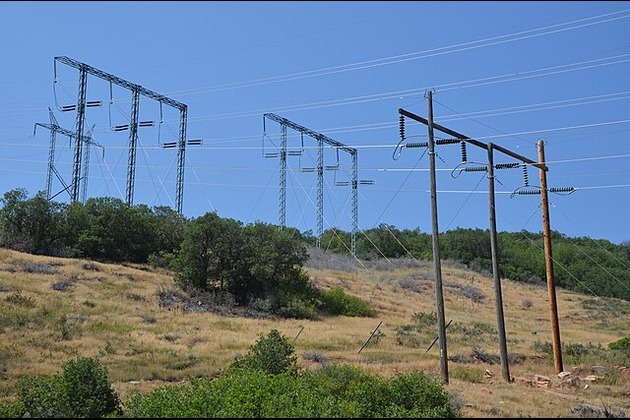Solar trackers: a comprehensive guide
PRwire360
30 Jan 2023, 23:21 GMT+10
There are various ways to design and install a solar energy system on your land to generate solar power for your home. If you are contemplating a ground-mounted solar panel installation, you may want to consider a solar tracking system so that your panels can track the sun as it moves across the sky. This article explains what a solar tracker is, the numerous types available, and how to determine whether a tracking system is good for you.
How do solar trackers operate, and what are they?
A solar tracking system (also known as a sun tracker or sun tracking system) optimizes the angle at which solar panels receive solar radiation by following the sun throughout the day. Solar trackers are primarily used for ground-mounted solar panels and huge, freestanding solar installations, such as solar trees; they are not utilized in most domestic solar projects.
When solar panels are exposed to sunlight, the angle at which the sun's rays strike the panel's surface (known as the "angle of incidence") impacts how efficiently the panel converts the incoming light into electricity. The smaller the incidence angle, the more energy a solar panel can generate. Solar trackers help to reduce this angle by orienting solar panels so that light strikes them perpendicularly.
Single-axis versus dual-axis solar trackers
Depending on their movement, there are two types of solar tracking systems: single-axis and dual-axis.
Single-axis solar tracking systems
A single-axis tracker moves your panels along a single axis, typically aligned north to south. These configurations enable your solar panels to arc from east to west and track the sun as it rises and sets, increasing your system's output without adding more solar panels.
Single-axis solar trackers can sufficiently boost your solar system's efficiency to compensate for their high installation and ongoing maintenance costs quickly. Deploying a single-axis tracking system on level, generally warm, and dry terrain is essential.
Dual-axis solar tracking systems
A dual-axis tracker allows your panels to move in north-south and east-west directions. This system is intended to maximize your solar energy gathering throughout the year by employing algorithms and sensors that detect seasonal variations in the sun's altitude and daily movements. Dual-axis trackers (manufactured by businesses like as AllEarth Renewables) are often a significantly less popular alternative for solar systems, especially for utility-scale projects.
Dual-axis trackers may be suitable for some commercial sites; they can generate up to 45 percent more energy than conventional static panels, allowing businesses with limited rooftop space for solar panels to generate enough power to fuel their operations. Utility-scale installations typically do not require dual-axis configurations because they are situated on expansive tracts of land without the space restrictions of a business roof.
Active, manual, and passive sun trackers are available.
In addition to single-axis and dual-axis solar tracking, solar trackers can be classified as active, manual, or passive. Active solar trackers utilize a motor to move, whereas manual solar trackers must be manually moved, and passive solar trackers utilize the sun to move.
Active solar tracking systems
Most available tracking systems are active, meaning they use energy to power a motor or other mechanical device that tilts the solar panels in the correct direction. Generally speaking, active solar trackers are better suited for large and intricate systems.
Manual solar trackers
Manual solar trackers allow you to align your panels with the sun's movement throughout the day. This tracker is advantageous since it requires less maintenance than active or passive trackers. However, they are typically impractical due to the need for constant panel alignment with the sun's daily movement.
Passive solar trackers
Passive solar trackers follow the sun but do so without a power source. At a high level, they move by heating gas with solar energy. When this gas expands, it causes the solar modules to move mechanically. As the sun moves and the gas cools, it recompresses, and the panels return to their original position.
Passive trackers can be used for small PV systems but not for much beyond because of their reduced accuracy. In addition, passive solar trackers are less effective in colder climates because the liquid inside the tracker takes longer to warm up.
Advantages of solar trackers
The following are the primary benefits of solar trackers:
- Solar panels on tracking systems produce more electricity since they track the sun's position.
- More electricity output is especially beneficial if you have a variable rate plan for electricity (like time-of-use)
- More energy production necessitates fewer solar panels, requiring less room for your solar system.
- The most significant advantage of a solar tracking system is that it increases electricity generation. Typically, the performance of a solar panel system with a single-axis solar tracker fitted increases by 25 to 35 percent. A dual-axis tracker increases performance by five to ten percent.
Reside at a high latitude where the sun's position varies significantly between summer and winter. A dual-axis tracking system may be an excellent approach to maximize your solar production and collect enough energy for your home or property. Your solar panels' optimal orientation and tilt depend largely on your geographic location. Determine your location and the optimal angle for solar panels.
Negative aspects of solar trackers
Having a solar tracking system does have some downsides, including:
- Solar tracking systems are more expensive than conventional, stationary solar panel systems. This is due to the additional parts and effort required to prepare a location for trackers.
- Solar trackers frequently necessitate more maintenance than fixed-mount solar panels (which need almost no maintenance, to begin with)
- Trackers are frequently too large and heavy to be used on rooftops, so a ground-mounted system must be installed.
- Installation and upkeep expenses for tracking systems are typically greater. The initial cost of a solar tracker will be greater than that of a fixed solar panel system because it is a more complicated technology with moving elements. This also leads to the second area where solar tracking system costs increase: maintenance. A more complicated system necessitates more maintenance, resulting in greater expenses over time.
Solar trackers are typically not worth the price for home installations. However, for commercial installations, such as enterprises with limited roof areas and larger power output, the increased efficiency provided by a solar tracker may be worth the additional cost.
Another drawback of solar trackers is that they are often too heavy for rooftop solar installations. If you desire a tracking solar panel system, be prepared to install a ground-mounted array.
Do you need a solar tracking system?
Rooftop installations offer reduced prices and do not necessitate dedicated yard space, making them the optimal option for most households seeking to utilize renewable energy. As a result, most residential solar systems do not incorporate solar trackers, which are likely, not worthwhile. A south-facing roof eliminates the requirement for a tracking system, as solar panels will already be aligned to receive optimal sunlight. To maximize your solar system's performance, you should consider getting the most efficient solar panels currently available.
Due to the yearly movement of the sun, solar trackers provide the greatest return on investment at high latitudes. Therefore, solar clients in Alaska and certain northern regions of the contiguous United States may wish to consider adding trackers to their systems. However, for most U.S. citizens, the sun's movement will not affect your solar panel production to the extent that a tracking system would be financially advantageous. Most clients are better off installing a south-facing rooftop array or a south-facing ground-mounted system.
Large commercial projects, often greater than one megawatt (MW), also utilize solar tracking systems frequently. For large-scale commercial solar arrays, the long-term advantage of increased production over time is sufficient to justify the original investment and maintenance expenditures. In addition, commercial-scale solar installations are often installed on the ground, making solar trackers possible.
 Share
Share
 Tweet
Tweet
 Share
Share
 Flip
Flip
 Email
Email
Watch latest videos
Subscribe and Follow
Get a daily dose of Indianapolis Post news through our daily email, its complimentary and keeps you fully up to date with world and business news as well.
News RELEASES
Publish news of your business, community or sports group, personnel appointments, major event and more by submitting a news release to Indianapolis Post.
More InformationBusiness
SectionU.S. stocks restricted by tensions in Middle East
NEW YORK, New YorK - U.S. stocks closed mixed on Friday, with gains and losses modest, as investors and traders weighed up the escalation...
US consumers cut back after early surge ahead of Trump tariffs
WASHINGTON, D.C.: Retail sales dropped sharply in May as consumer spending slowed after a strong start to the year, primarily due to...
Mitsubishi joins automakers raising prices after import tariffs
WASHINGTON, D.C.: Mitsubishi Motors is the latest automaker to raise prices in the United States, joining a growing list of car companies...
Lilly makes $1.3 billion move to expand into gene-edited heart drugs
INDIANAPOLIS, Indiana: Eli Lilly is making a bold play in cardiovascular gene therapy, announcing plans to acquire its partner Verve...
New Zealand PM seeks stronger ties with China amid security talks
BEIJING/WELLINGTON: New Zealand's Prime Minister Christopher Luxon commenced his visit to China on June 17, seeking to strengthen trade...
U.S. on edge as Israel-Iran conflict escalates
NEW YORK, New York - U.S. stocks made only minor moves in both directions,Thursday, as investors fretted about the Israel-Iran conflict...
International
SectionDrug shortages and layoffs spark health crisis in Argentina
BUENOS AIRES, Argentina: Since taking office in December 2023, Argentine President Javier Milei has implemented sweeping austerity...
Volcanic ash grounds flights to Indonesia, disrupts travel to Bali
LEMBATA, Indonesia: Indonesia's Mount Lewotobi Laki Laki erupted dramatically on June 18, generating substantial ash and smoke plumes....
REE misjudgment caused April blackout, says Spain's energy chief
MADRID, Spain: A routine oversight by Spain's power grid operator, REE, has been identified as the trigger behind the large-scale blackout...
Trump gives himself a fortnight to decide on joining Netanyahu's war
WASHINGTON, DC - In a bid to defuse speculation, U.S. President Donald Trump says he will make his decision on whether to have the...
U.S. abandons inter-agency effort to pressure Moscow on Ukraine
WASHINGTON, D.C.: A quiet shift inside the Trump administration has stalled a key diplomatic initiative aimed at pushing Russia toward...
Investigators examining Black Boxes recovered from Air India Boeing
NEW DELHI, India: Indian investigators are examining the black boxes from a Boeing 787 Dreamliner to determine the cause of a catastrophic...













